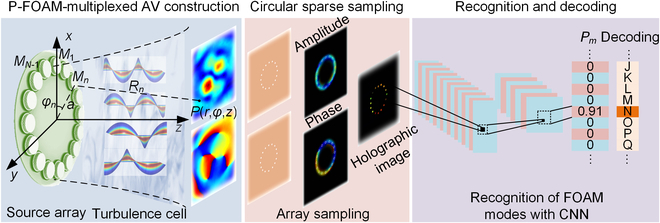Fig. 1.

Principle of the phase-dislocation-mediated FAV communication based on circular sparse sampling and machine learning. Our approach can be divided into 3 main parts, including the P-FOAM-multiplexed beam construction, circular sparse sampling, and FOAM recognition and decoding. A single-ring source array is used to construct P-FOAMs, where a turbulence cell is used to approach the nonideal transmission condition. The acoustic pressures are acquired by the sparse sampling around the single/dual-ring, and holographic images including both pressure and phase are taken as the training input of CNN to classify P-FOAMs. The maximum classified probability of Pm = 0.91 indicates the decoded result of transmitting the letter “N”.
